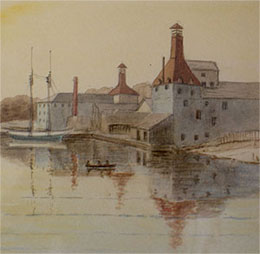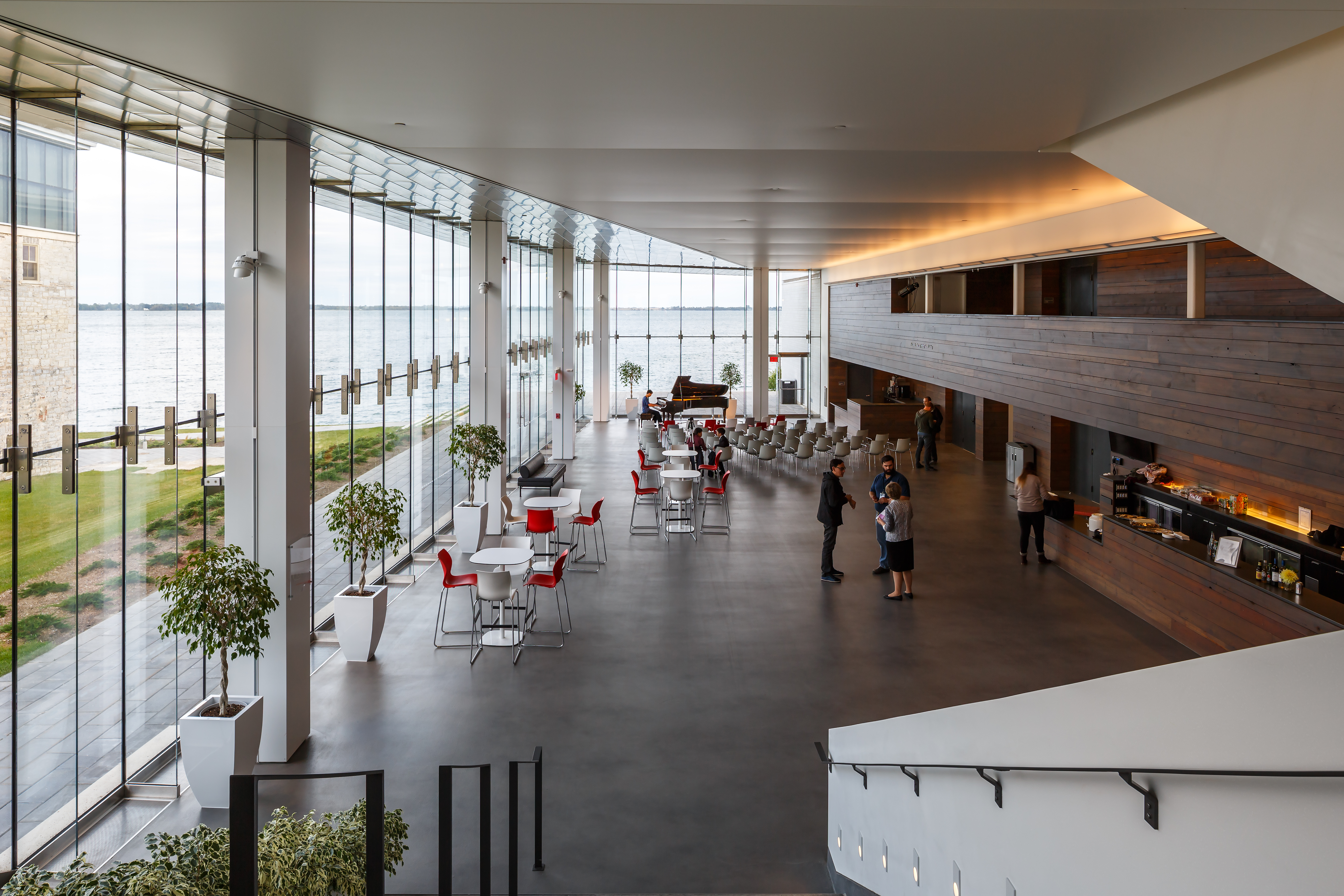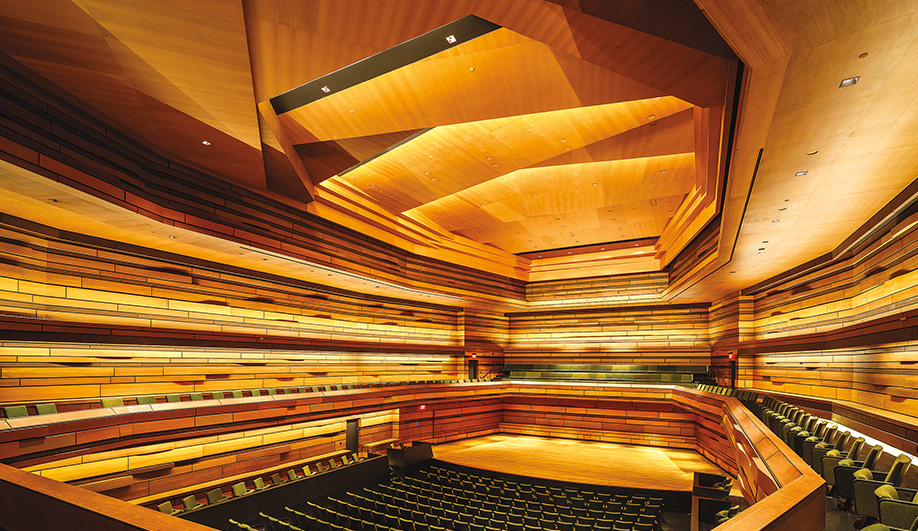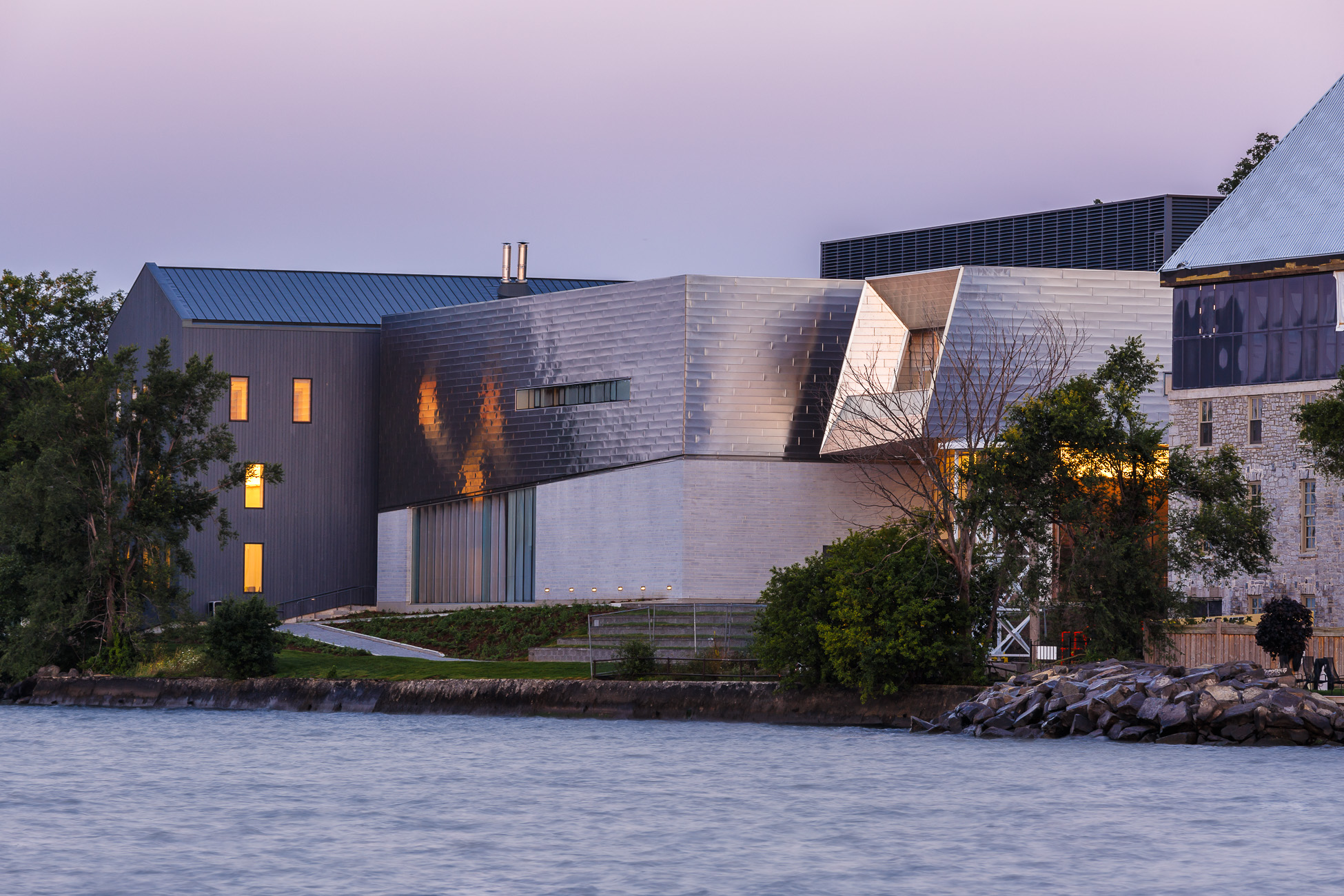The site of the Isabel Bader Centre for the Performing Arts, on the shore of Lake Ontario, was previously known as the J.K. Tett Creativity Complex. The site included the J.K. Tett Centre, the former stable building and the Stella Buck building. Queen’s purchased the stable and Stella Buck buildings as the site for the Isabel Bader Centre for the Performing Arts.
The City of Kingston continues to own and manage the J.K. Tett Centre, now known as The Tett Centre for Creativity and Learning and reimagined as an arts hub. The Stella Buck and former stable buildings have been redeveloped and incorporated into the Isabel Bader Centre for the Performing Arts, revitalizing the buildings, and preserving their historical and architectural significance.
History of the Site

| 1832 | Robert Drummond and James Morton establish Morton’s Brewery, using limestone quarried from the Kingston area. |
| 1832 | The HMS St. Lawrence, a 112-gun warship of the Royal Navy that served on Lake Ontario during the War of 1812, is docked at Morton’s Brewery and used as a storage facility. When it arrives at the brewery, the ship is already dilapidated and eventually sinks more than 30 feet under water. The location is now a popular dive spot. |
| 1834 | Robert Drummond dies during a cholera epidemic; James Morton assumes control of the business. |
| 1835 | A disastrous fire occurs at the brewery. |
| 1840 | By 1840, Morton is able to buy out the Drummond family’s interest in the business and rebuilds the brewery. |
| 1844 | A distillery is added to the site. |
| 1850 | By 1850, Morton doubles the size of the distillery and builds a new malt house. |
| 1854 | By 1854, a tenement for employees is added and a row of cottages is built. |
| 1855 | More than 60 families are supported by employment at the brewery. |
| 1864 | After years of over-extending himself, Morton dies bankrupt. |
| 1895 | L.H. Clark and Co. Malsters operate at the site; Jon McMilland and Sons operate the distillery until the turn of the century. |
| 1900 | Maple Leaf Milling Company uses the buildings for grain storage. |
| 1918 | Canadian Ministry of Works conducts a major survey of the buildings in preparation for converting the buildings to the Sydenham Military Hospital. |
| 1918-1923 | The Sydenham Military Hospital operates at the site during WWI. |
| 1919 | Famed pilot Billy Bishop of Bishop-Barker Company Ltd. takes an aerial photograph of the site. |
| 1927-1968 | The site becomes the Military Regional Headquarters. |
| 1975 | The site becomes the J.K Tett Creativity Complex and the western building is converted to a training facility for people with disabilities. It is named after local social worker Stella Buck. |
| 2007 | The City of Kingston sells the former stable building and Stella Buck building to Queen’s University. |
Elements of the Isabel
Wood
The original pine, hemlock and spruce floors found in the old brewery building that forms the heart of the Isabel were removed during the initial construction. Placed in storage during construction, this old-growth, heritage wood was later re-milled and used as a finish in the lobby of the new building.
Glass
To take advantage of the lakeside vistas, the glass used in the lobby windows of the Isabel is low in iron, which provides for much clearer views. Lobby lighting is directed upwards and is reflected down off the steel and stretched vinyl ceiling, which creates a softer light and prevents glare off the windows from obscuring the view.
Steel
The first time he saw the site, n45 architect Robert Matthews remembers the dazzling effect of whitecaps shimmering on the water. He chose the textured steel used to clad the upper reaches of the Isabel to mimic the effect of the sun reflecting on waves.
More About the Architecture and Design
The mandate? Design a new performing arts centre for Queen's University.
Put like that, it sounds simple.
In fact, it was anything but. In addition to a performance hall, the building needed to accommodate the very different needs of theatre, music, and film and media students. And all fit within a compact piece of land that, while it featured fantastic lakeside views, demanded fitting a new building around substantial historic structures.
That was the challenge for Ottawa-based architects N45 and Oslo's Snøhetta.
The Norwegian firm is well known for designing a number of significant buildings worldwide, among them the Library at Alexandria in Egypt as well as impressive performance halls in Oslo and Busan, South Korea. the Isabel is Snøhetta's first-ever Canadian commission.
The firms’ winning design located the bulk of the new building within the courtyard created by the historic brewery and stable – and then incorporated them directly into the new facility. Repurposing the former brewery meant removing the existing pine, hemlock and spruce floors, which was later re-milled and used to finish the interior of the building's lobby.

If the Isabel can be said to have a heart, it is the 567-seat performance hall, now known as the Jennifer Velva Bernstein Performance Hall. Virtually a building within a building, no part of the hall touches the rest of the structure directly and its two-foot-thick walls so effectively muffles sound that even if someone outside the hall were pounding on the floor with a hammer, the audience inside wouldn’t hear it.

The room's shape and form was driven by the international design firms, Arup and Theatre Projects Consultants, who worked closely with Snøhetta and N45 to design an intimate and dynamic performance space that wraps the audience around the room (this follows Arup's and Theatre Projects' collaboration with Snøhetta on the Oslo Opera House).
Theatre Projects seamlessly and discreetly integrated the lighting and rigging systems to maintain Snøhetta's clean, modern design for the performance hall. In the Isabel's 100-seat flexible theatre, Theatre Projects created a versatile space that can be rearranged into various stage configurations providing countless creative options. The acoustics and audiovisual systems were designed by New York-based Arup using their Virtual SoundLab technology, which allows the environment of a space to be listened to before it is even built. Retractable motorized acoustic drapes (designed by Theatre Projects to Arup's requirements) allow the performance hall sound to be customized even further.
From the project inception, Arup's team has collaborated with the architects at Snøhetta and N45 to create the pristine acoustics of the Isabel’s performance hall as well as the Principal Emerita Karen Hitchcock Recital Hall, whose acoustics are designed to the same high standard as the main venue. It is rare that sound engineers work so closely with the architects from day one.

When Robert Matthews, the lead architect from N45, first saw the site he recalls being stunned by the view – the white-capped lake, with all its "presence and power." Thanks to its large expanses of glass, the Isabel's design draws the lake into the building while its sinuous steel roof echoes the glistening waters. Together they tie what Matthews justly calls "one of the great concert halls in eastern Canada" to its waterside environment.
Want to explore the Isabel? Take 360 virtual tour.
